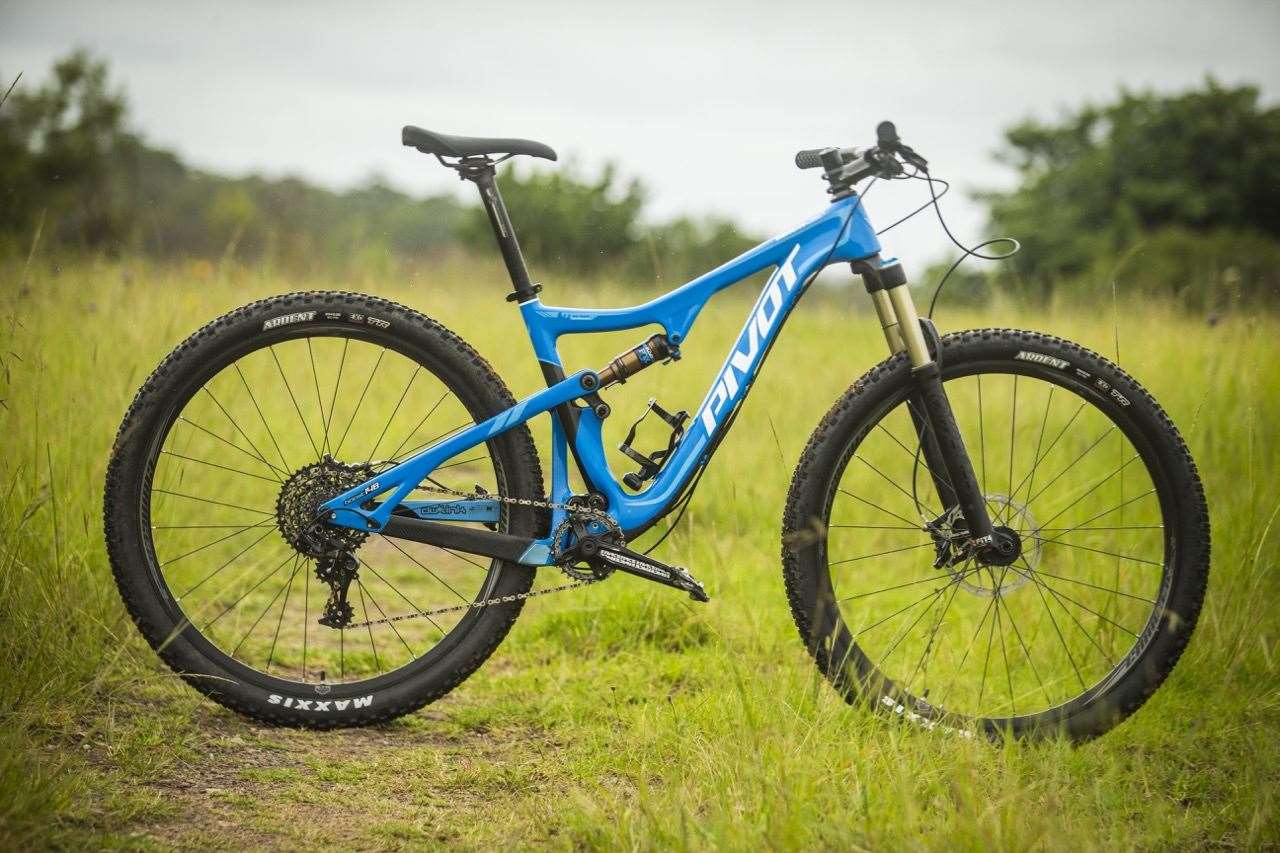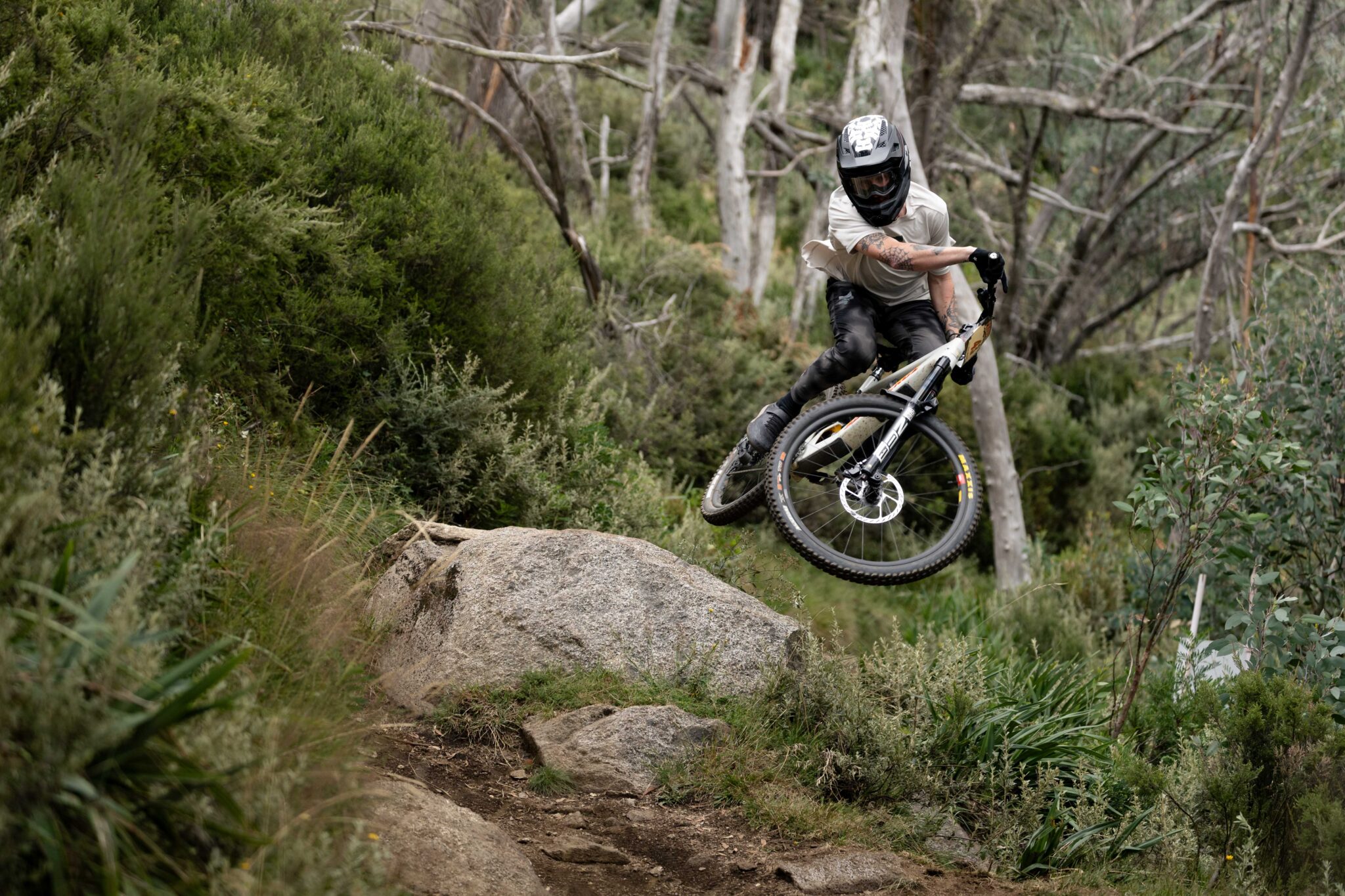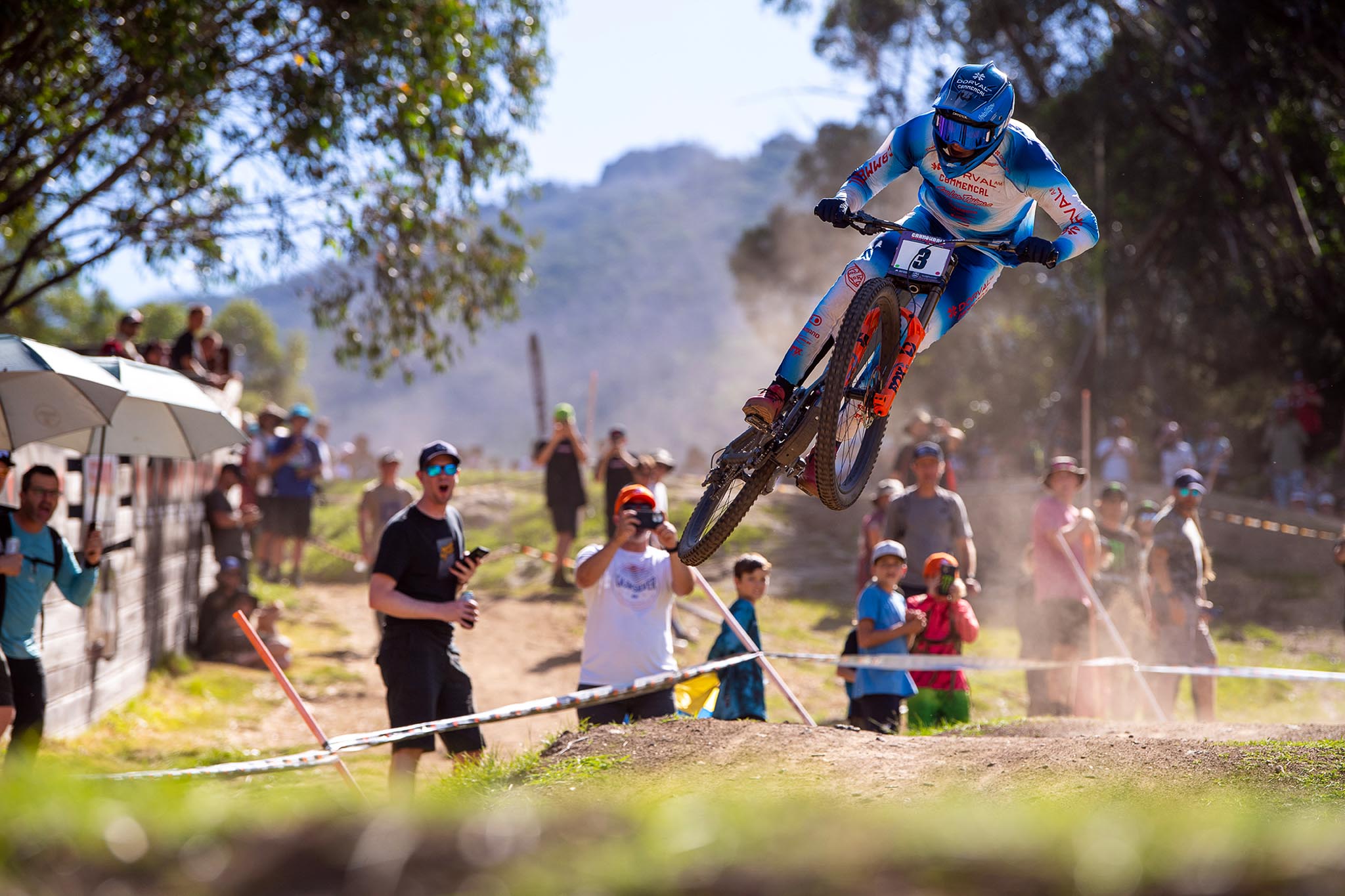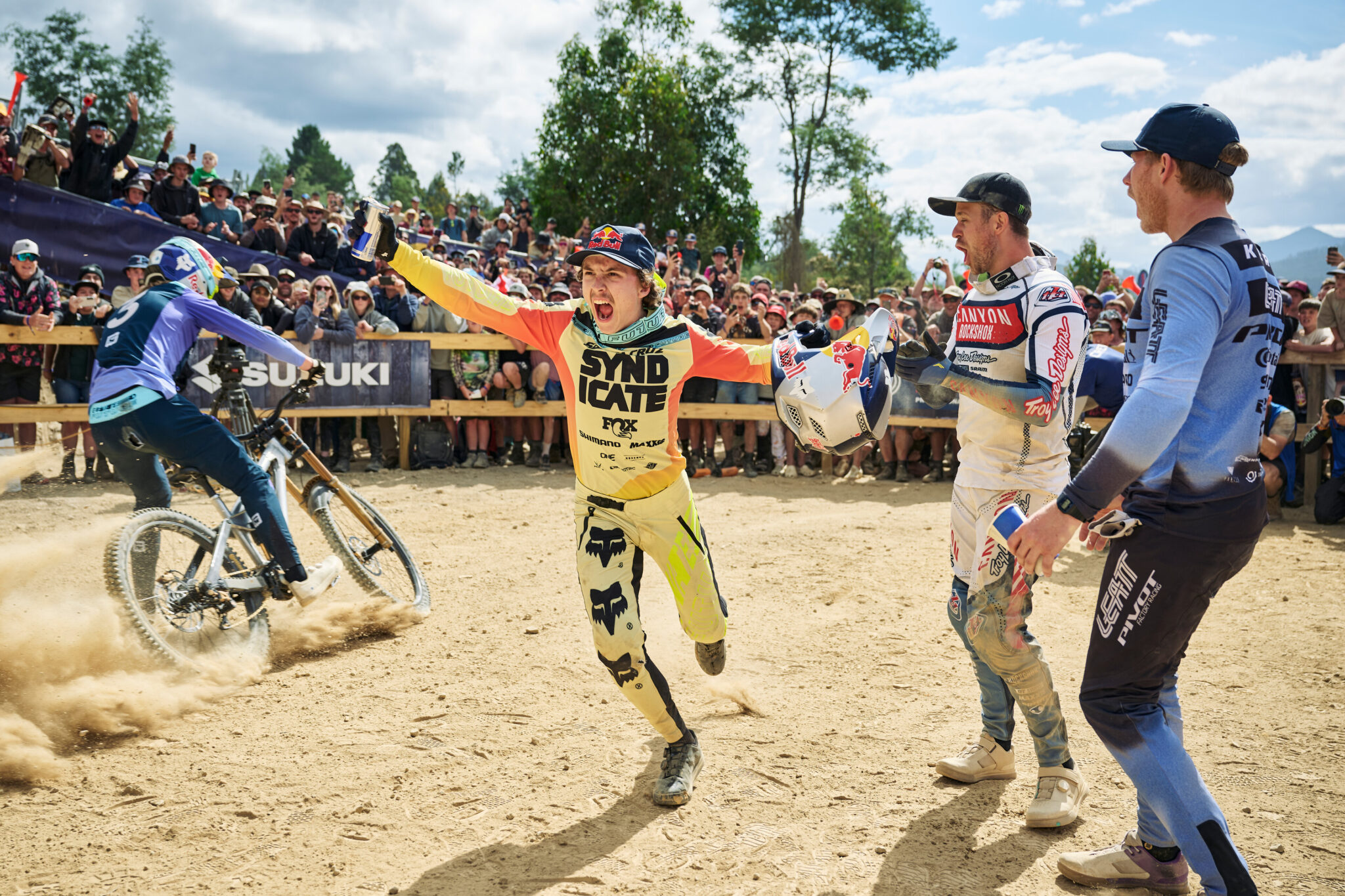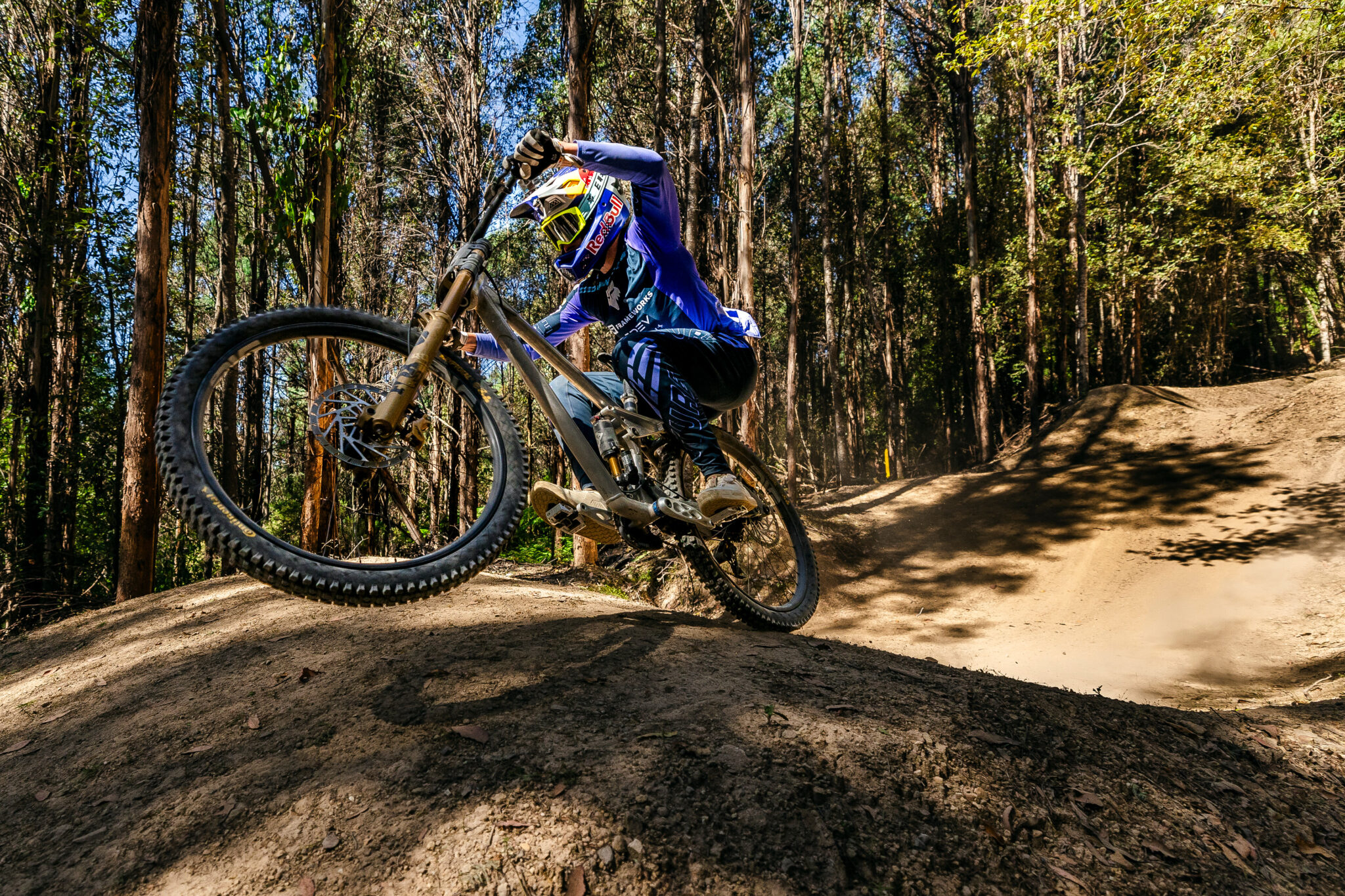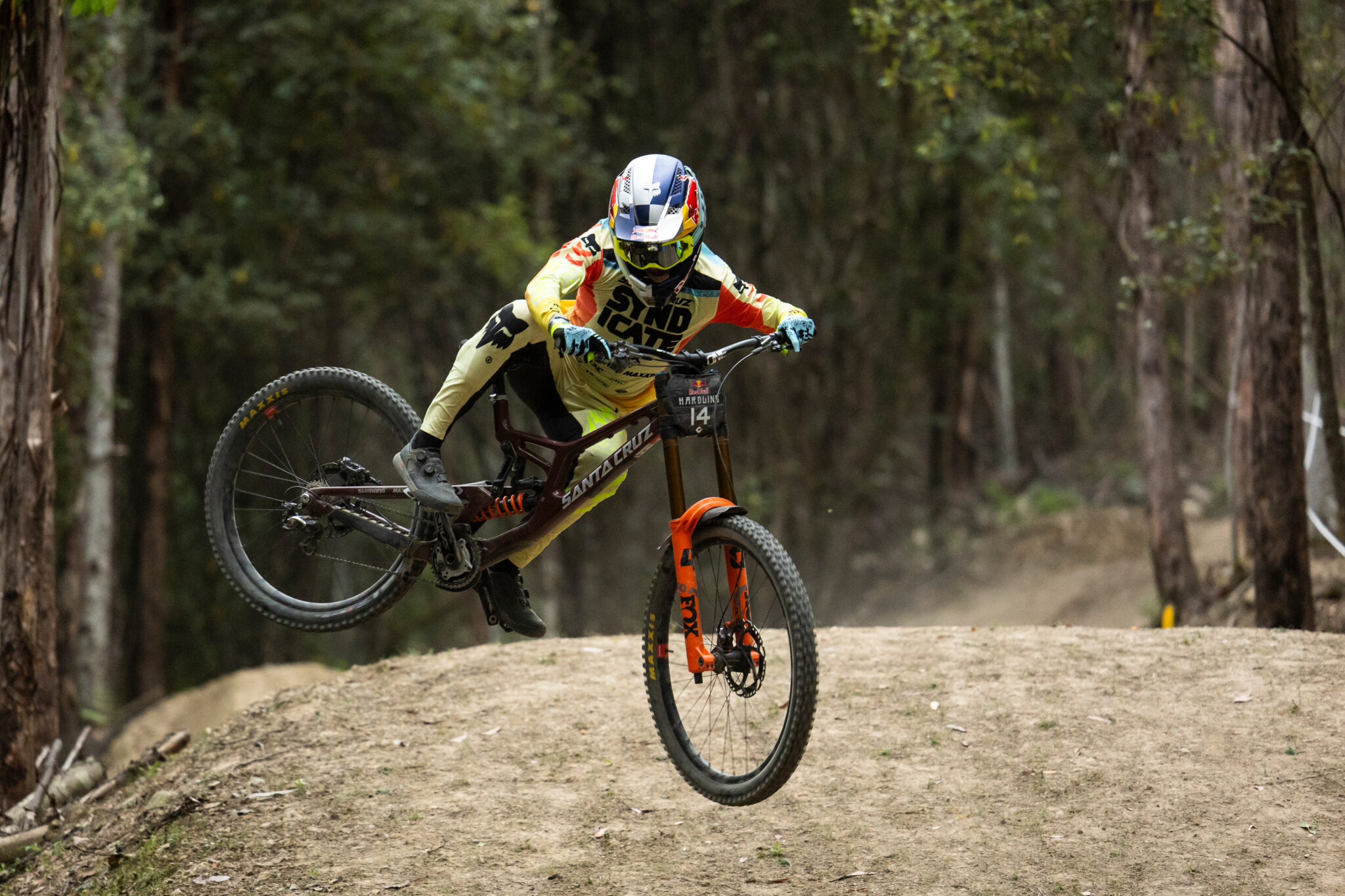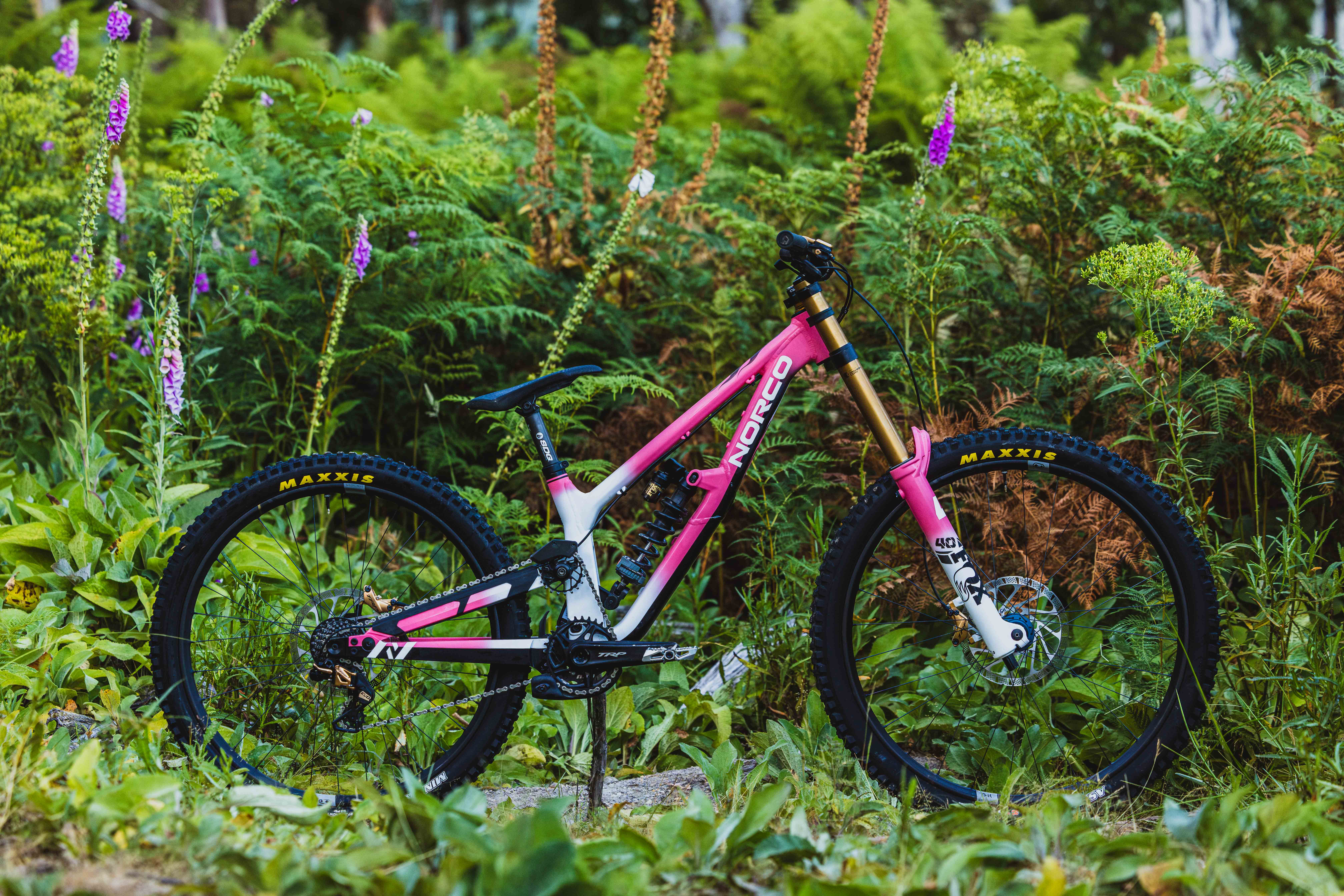Tested: Pivot Mach 429 Trail
The turning point of trail bikes
The turning point of trail bikes
“Trail bikes” have evolved a hundred fold from the 26 inch wheeled either built up XC bikes, or lightened up big travel rigs. With huge advances in building for wheel sizes, drivetrain, geometry and braking what used to be a longer travel XC bike fitted with your own do-it-yourself single ring set up, bigger tyres that weighed over 15kg has now been replaced with bikes that are on par in weight to some of their cross-country brothers.
Brands like Trek and Giant were early adopters of this “Technical Trail” bike with their Fuel EX and Anthem X models. Both of these styles of bikes received a huge amount of praise for bringing together a true “do-it-all” bike. The Mach 429 Trail is Pivot’s line in the sand for the Trail style of riding that is becoming more and more popular. The big question with these bikes at the moment though is what is the best wheel size? 27.5 or 29? I was eager to see if this 29” bike was going to be nimble enough in the tight twisty singletrack that Sydney so readily offers.
The “Trail” versions of bikes have definitely had their ups and downs, with some bikes being too gravity orientated and some being too cross-country focused. As a style of bike it is interesting to see how different bike manufacturers go about creating a bike that is “trail” focused i.e. something that can handle long up hills but still be fun riding down and agile in the tight trails that we see throughout Australia. The Pivot 429 Trail is not purely their 429 frame with larger and longer forks, it offers a slacker head angle up front, combined with a shorter rear end.
Since its creation in 2007 Pivot has always had their toes dipped into the gravity market, I was very excited to see how this bike would perform. Personally I have spent a lot of time on the Mach 6 model, riding it on all styles of trails from local all-mountain tracks all the way to the hill sides of Austria. The bike was capable way beyond it’s travel and I was interested to see if this very different bike was going to be the same.
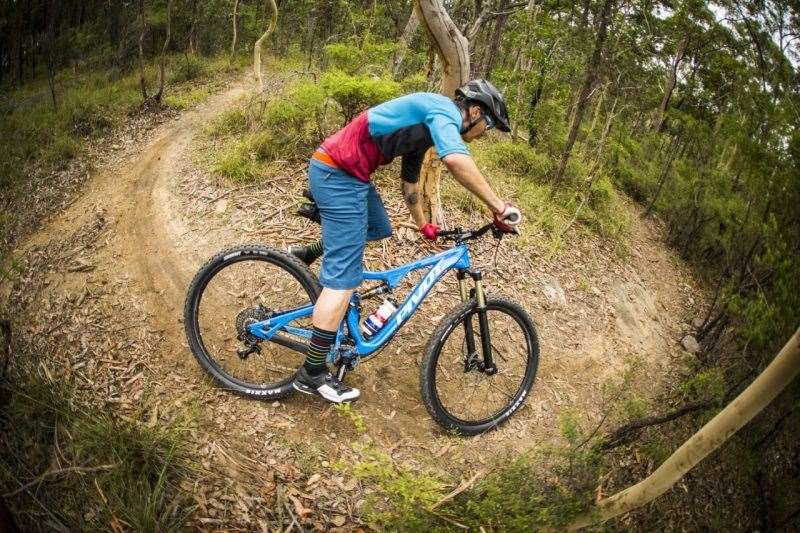 (c) Tim Bardsley-Smith
(c) Tim Bardsley-Smith
Initial impressions on the Pivot Mach 429 Trail
I’ve mentioned this before in other reviews but when a bike turns up in a big box I am happy, it generally means that the bike is pretty much pre-assembled and the Mach 429 Trail was no different. The bike was a joy to pull out of the box, and I literally had to pop a wheel on and tighten the bar and stem. The first thing that I noticed when putting the bike together was the cockpit. The bike utilises the RaceFace Ride bars that come in at 740mm (my golden bar number) and on this was the commanding Guide R brake set and Sram X1 group set. This combination of parts screamed burly to me and was the first sign that this bike was going to handle most things that I could throw at it.
As I inspected the bike more and more I realised just how much work Pivot has put into the styling on this bike. The carbon mould they use is very neat and while not using integrated cables it really kept the lines of the bike very clean. Although integrated cables can be fiddly in the workshop I am a huge fan of them and think for better maintenance and lower servicing they are key. The frame also utilities the new Boost 148 rear end, a feature I have tried in and around the car park, but nothing more. Being a more gravity oriented rider I believe wider is better for axle points, it creates a stiffer bike to corner. Complementing the Boost 148 rear end was a set of the brand new Fox 34 Fit4 110 forks. It was nice to see the 34 keeping the big wheel steed stiff.
At 175cm I generally opt for a medium bike and it is crazy to see how many different brands have completely different sizings. Pivot pride themselves on offering a great mix of sizes and the top tube length was on point, using a 70mm stem I felt in a great position for climbing and attacking trails. Fulls specs and sizings are available from JetBlack Australia.
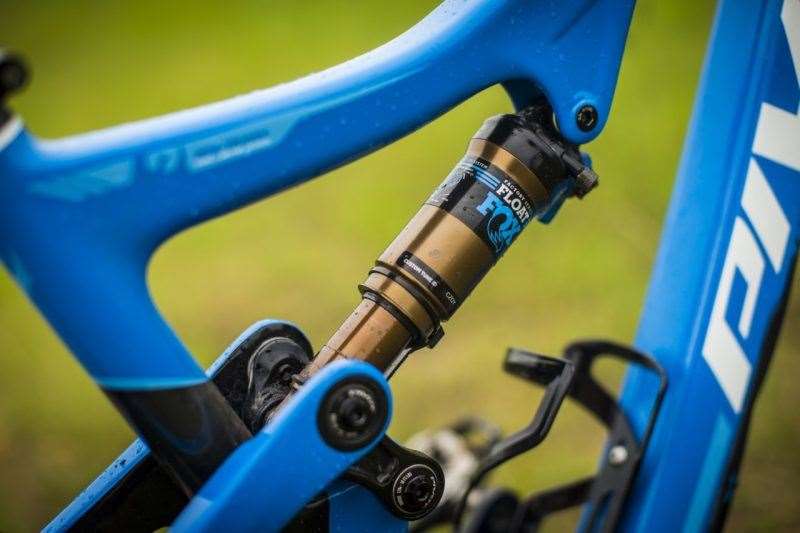 (c) Tim Bardsley-Smith
(c) Tim Bardsley-Smith
On The Trail
My first ride I took to the same track I take all bikes to (that aren’t downhill bikes) a Sydney local track. I think doing this really keeps things fair between bikes as it’s the same track but it also means I am used to the same lines so I can tell if a bike is going to let me ride where I want to, or if it has more a mind of it’s own. This was the first 29er to take on the track and I was intrigued to see how it would go in the tight and twisties of the trail.
Having a set of Sram Guide R brakes under my fingers was pretty confidence inspiring out of the box. To hop on a new bike and have a familiar brake that I personally see to be the most powerful option on the market, I knew that I was going to be able to get out of any sticky situations I was going to be in. Matched with the X1 drivetrain I was set with a group set that is tried, tested, raved about and truly works. I had no worry of any mechanicals straight out of the box and there was no chain guide, which was great.
I started off a little tentatively to be honest, just due to the wheel size. The rolling speed was very impressive but I was not sure how it was going to go with corners. I have ridden plenty of 29 inch cross country bikes but nothing more than 100mm of travel. Maybe it was the memories of the XC bikes I had ridden that got me a bit slower in the first few corners, but the more I pushed the wheels the more I realised just how well the bike was starting take the corners with amazing amounts of grip coupled with the nimble nature of it’s 27.5" brethren. Now I have narrowed this down to three things. Firstly the larger wheel size gives you more tread on the ground (duh!) but second is the wider wheel axles, this wider system creates a stiffer platform for cornering so the bike can be thrown over more into the corner without the wheel flexing. Finally, the short rear end made the bike feel playful. After that first ride the larger wheels had won me over for this level of travel.
The Boost 148 technology is not like the 142 standard which gave users a longer axle end to give the QR wheels better access, this technology actually uses a wider hub and flange spacing, so it is not a gimmick. The stiffer set up was a stand out for the whole testing of this bike, I could literally throw this bike into a corner and matched with the larger wheels it would eat it up. When I got a little squirrelly the short rear end made easy work for correcting the wheel tracking.
Now on the suspension front it has been a long time between drinks for Fox and I, this is by no means a reflection on the product's quality (I actually used to race on Fox and have always been impressed) but I have found that the RockShox line really suits my riding style with their adjustable air sleeves. With Fox putting a huge amount of work on their Fit cartridge and it being labeled a completely new cartridge I was excited to put it through it’s paces. The new Fox suspension really sits up in it’s travel more which I love the feeling of, the fork doing so really complemented the rear shock as the DW link equipped bike gives you a very progressive feeling. The forks were easy to set up, once setting them to 20% sag it was a case of set and forget, small bumps were soaked up nicely and big hits didn’t soak up all the travel.
Now I always have a few rough sections that I ride on trails, these lines are great to see what a bike is capable of. At 130mm of travel I was unsure how the 429 Trail was going to perform, I tipped the bike in down the trail and thought “why not”. Now 130mm of travel on these sections was probably a little bit on the low side and I did get close to using all the travel a couple of times, however the thing I found that got me out of a few sticky situations was the wheels! The 29er wheels kept the speed when the bike and myself were being bucked around, they kept stability and the taller front end stopped me on occasion from being thrown over the front end. The lesson I learnt was firstly that trail bikes are not necessarily a “do-everything” bike but I also learnt that larger wheels have a lot more applications than merely rolling speed. They maintain speed in sticky situations and roll over most rough sections that you can throw at them.
On the trail I did find a couple of small issues, firstly was the water bottle area, it was very compact. Although not a huge drama and definitely not something that would shy me away from purchasing a bike like this it was a small gripe. I would most likely run a backpack if I was doing any rides over an hour. Now the dropper post situation, I kept an open mind but I really found that I was looking for the dropper button on a lot of situations. This test bike was a sample and stock bikes come specced with one – which is great as this bike screams for one.
Our Impression
I don’t want to give it back…? Too much? But seriously Pivot you have hit the nail on the head with creating a purpose built trail bike that has a balance between cross country and all-mountain. From the geometry, to the parts and group set this bike has been created for a purpose and that is as a trail bike. The 429 Trail was light on the trail, manoeuvrable in the corners and kept a smile on my face for most of the ride. The bike itself won me over on 29inch wheels, for all riders out there that have their heart stuck on smaller wheels all I can say is give the larger wheel size a try before forming your opinions. Pivot in my eyes is more of a boutique brand then your standard offerings out there and as a reflection the price on this bike is a little on the higher side at $8,599. Comparing it to other similar brands i.e. Santa Cruz or Yeti you are going to be handing over similar amounts of money for a similar bike with workmanship on the same level – and if you love to ride trails, it's a sound investment.
Three things we liked about the bike
- Great geometry for trail riding.
- The Boost spacing of 148/110 for cornering stiffness.
- The carbon frame is a work of art.
Three things we would change about the bike
- Some more room for the bottle cage would be good
- Running internal cables would be nice.
- The price tag is a little high
Photos: Tim Bardsley-Smith
